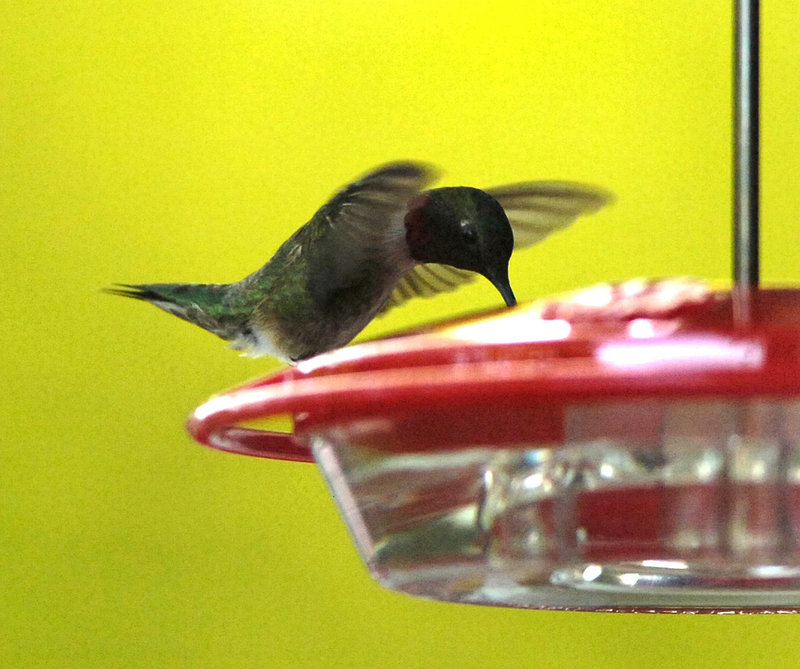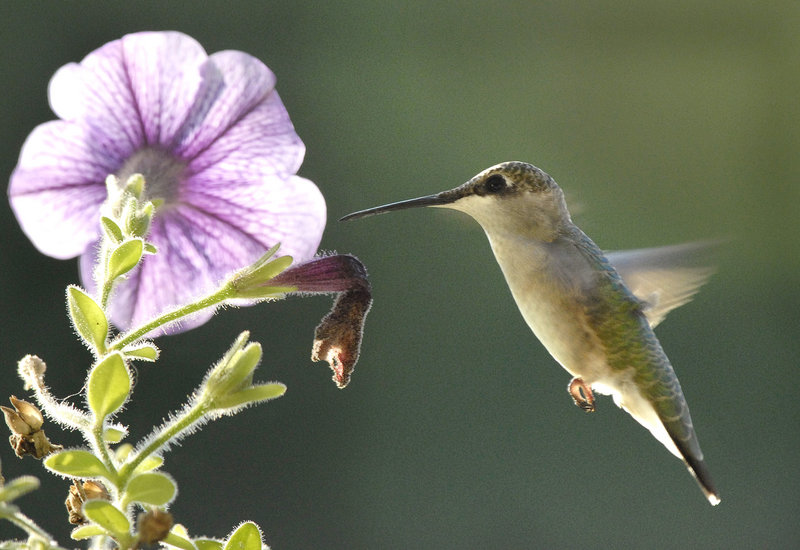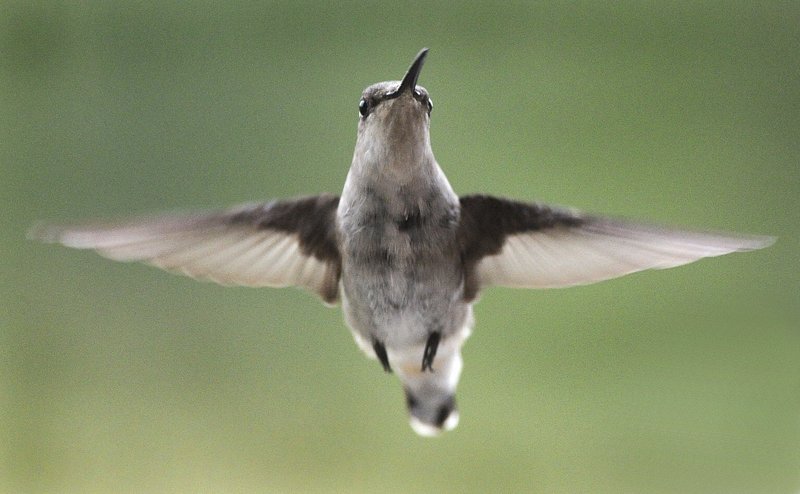A cool, wet spring in many parts of the country delayed the arrival of hummingbirds, but you can be sure they are now somewhere in your garden, especially if you have a smorgasbord of colorful flowers.
Hummingbirds, aka “hummers,” dart, dive and delight you with their fast-flying, acrobatic-like maneuvers as they search for nectar among flowers. They also like feeders filled with plain sugar water.
“I keep two hummingbird feeders in my yard, and have had luck attracting them with several plants: bee balm, salvia, fuchsia and nicotiana,” says Marilyn Adair, a gardener in Yorktown, Va.
“I’ve also had hummers come to pentas on my deck.”
Along the East Coast, you’ll find only one hummingbird species, a migrant known as the ruby-throated hummer, according to Tim Boucher, a geographer with the Nature Conservancy.
“The ruby-throated hummingbird migrates from Central America in April, breeds in the East, and leaves in the fall to go back to the tropics.
“As you go south, you get more species — in Arizona for instance, you get up to 18 species — some resident, some migratory.
“In the tropics of South America, there are hundreds of species of hummingbirds, and you can see over 25 species at a single feeder in the Andes of Ecuador.”
Ruby-throated hummers and others among their species weigh less than a nickel and can fit in the palm of your hand, according to Susan Summers, education associate at the Virginia Living Museum in Newport News.
They can fly at speeds up to 29 miles per hour, and their body structure allows them to fly forward, backward and to hover.
“They have even been observed to throw a somersault every now and then,” Summers says.
Known to be long-distance migrators, they fly 18 to 22 hours, especially when crossing the Gulf of Mexico. To prepare for the journey, they feast on insects and spiders; along the way, nectar gives them quick and easy fuel.
Often, their migration is timed to coincide with flowering plants along their routes; their favorites include native species with red or orange tubular blooms. They also like a source of fresh water, such as a birdbath for sipping and bathing.
Once they arrive at their destination, they get busy starting a family. Females make nests out of leafy materials woven together with spider silk and decorated with lichens, according to Summers. The female lays two bean-size eggs, and raises the hatchlings herself from newborns to young adults within three weeks.
This year, the hummingbird is the focus of the National Wildlife Federation, which encourages residents living in any kind of housing — single-family home, apartment, condo or townhouse — to hang up a hummingbird feeder somewhere outdoors. Setting a pot of colorful flowers next to it also helps entice these beautiful creatures to your space, especially if you don’t have a garden.
“No, not only red flowers attract hummers,” says Boucher.
“Blue flowers such as salvia, lungwort and agapanthus do a great job of attracting hummers. Remember, you want to plant a diversity of flowers in your garden — including flowers that bloom at different times of the year — from spring to late fall to provide sustenance for the little gems. Include flowers such as columbines, bee balm, phlox, foxglove, fuchsia, honeysuckle, trumpet creepers and goldenrod.”
In addition to nectar, hummers also eat insects for protein and minerals, according to Boucher. They eat all sorts of insects — mosquitoes, aphids, gnats and caterpillars — even spiders.
“Watch them carefully, and you can see them hawking for flying insects — they are very good at catching them in flight,” he says.
“People are fascinated with hummers because they are such terrific little fliers. Not only can they hover when feeding, but they are also the only species that can fly backward.”
For more information and tips on gardening for wildlife, go online to the National Wildlife Federation at www.nwf.org.
Send questions/comments to the editors.





Success. Please wait for the page to reload. If the page does not reload within 5 seconds, please refresh the page.
Enter your email and password to access comments.
Hi, to comment on stories you must . This profile is in addition to your subscription and website login.
Already have a commenting profile? .
Invalid username/password.
Please check your email to confirm and complete your registration.
Only subscribers are eligible to post comments. Please subscribe or login first for digital access. Here’s why.
Use the form below to reset your password. When you've submitted your account email, we will send an email with a reset code.